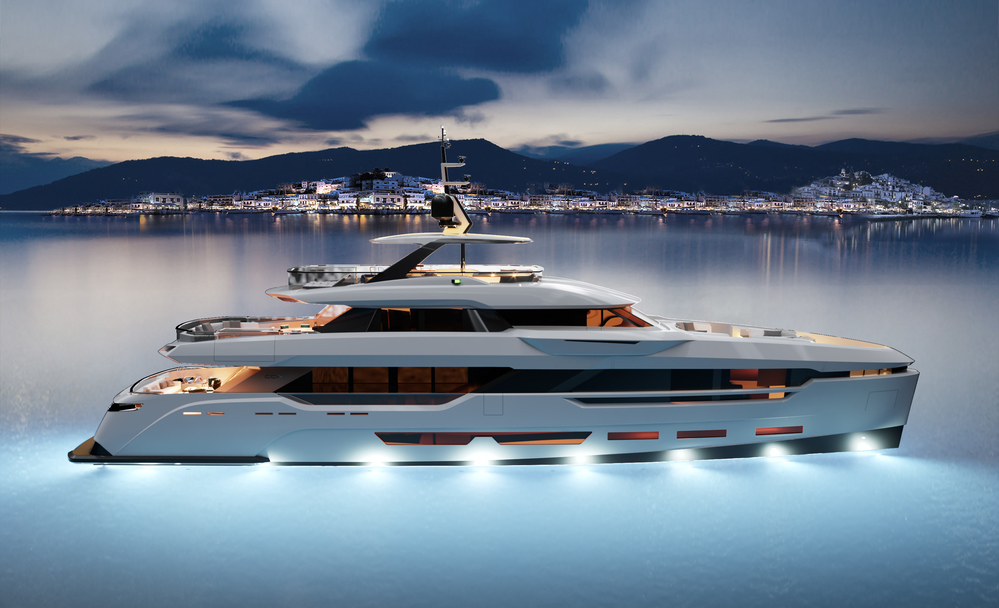13 Nov 2018
Read our article on RINAUTIC magazine
The yacht industry is undergoing a renaissance. After several difficult years, the market is finally expanding again. This growth gives us a unique opportunity to create iconic vessels that will shape the future of the market and accelerate the evolution of yacht design. In our family studio, we are already looking ahead and taking advantage of this positive trend. We have recently launched several exciting new vessels, including the first in our DOM line, tailored to a dynamic and modern lifestyle.
As designers, we should focus on creating unique vessels inspired by our artistic passions and tailored to the needs and desires of owners. In my case, my passions revolve around architecture, sailing, cars, art, design and social life. I combine all these aspects to create a universe that reflects the dreams and wishes of the owner, and, most importantly, his or her passions too.
Looking ahead and judging from yacht design trends, I expect we will see a lot less formality than in the past. I anticipate more open spaces, a greater focus on social life and a relaxed feel. Yachts will be more dynamic and user-friendly, with easier boarding and quicker access to the water. Tenders will get bigger and bigger. I also expect that the concept will shift away from the idea of a floating building and more towards being close to the sea.
Using lots of glass helps to achieve this blurring of boundaries between the interior and exterior. It is great that classification societies have started taking a more open approach to glass in recent years. As a result, we are seeing many new beautiful designs incorporating large glazed surfaces. This is a nice example of what we can achieve when design, rules and the market all converge and go forward in the same innovative direction.
In my opinion, classification societies do their best work when they follow – or even anticipate – market trends and help to encourage progress and innovation. That is why I have always had such a wonderful experience with RINA. RINA experts understand the needs of designers and have an open-minded approach to innovative ideas. Their flexibility and the friendly response I receive every time I deal with them are simply fantastic.

Of course, class rules and standards are essential for ensuring safety and improving functionality on board. We take the rules very seriously and incorporate them into the design in a holistic, organic way. All good designers consider these standards right from the start of the conceptual phase in order to define a clear framework for the design.
In the near future, I anticipate a greater crossover between different types of vessels. Rigid definitions are increasingly breaking down. We already see this happening in the automotive industry, with new car designs refusing to fit easily into existing categories. I am therefore convinced that the future of yachts is hybrid, both in terms of propulsion and design. This mix of styles and functional elements will make yacht design even more interesting as we move forward.
It will also make yacht design more challenging, so designers and classification societies need to quickly improve communication on both sides. Easier, faster feedback on projects will help us all to achieve more ambitious and innovative designs. Like design, communication is about developing strong human relationships. That is why I am proud to be part of such a positive partnership with RINA. It is incredibly beneficial for our studio and, more importantly, for the quality of our owners’ boats.
Taking advantage of digitalisation and the development of new tools like social media and instant messaging apps will help us to improve communication on a global scale.
Despite the benefits of digitalisation, I believe pen and paper will always have an essential role to play in the work of a designer. Computer modelling is useful for refining designs and testing out ideas, but without real ink and paper it is easy to start off in the wrong direction. Drawing and sketching are the “big bang” at the start of each of my projects, helping to generate creative ideas that drive innovative designs and bring passions to the fore.

